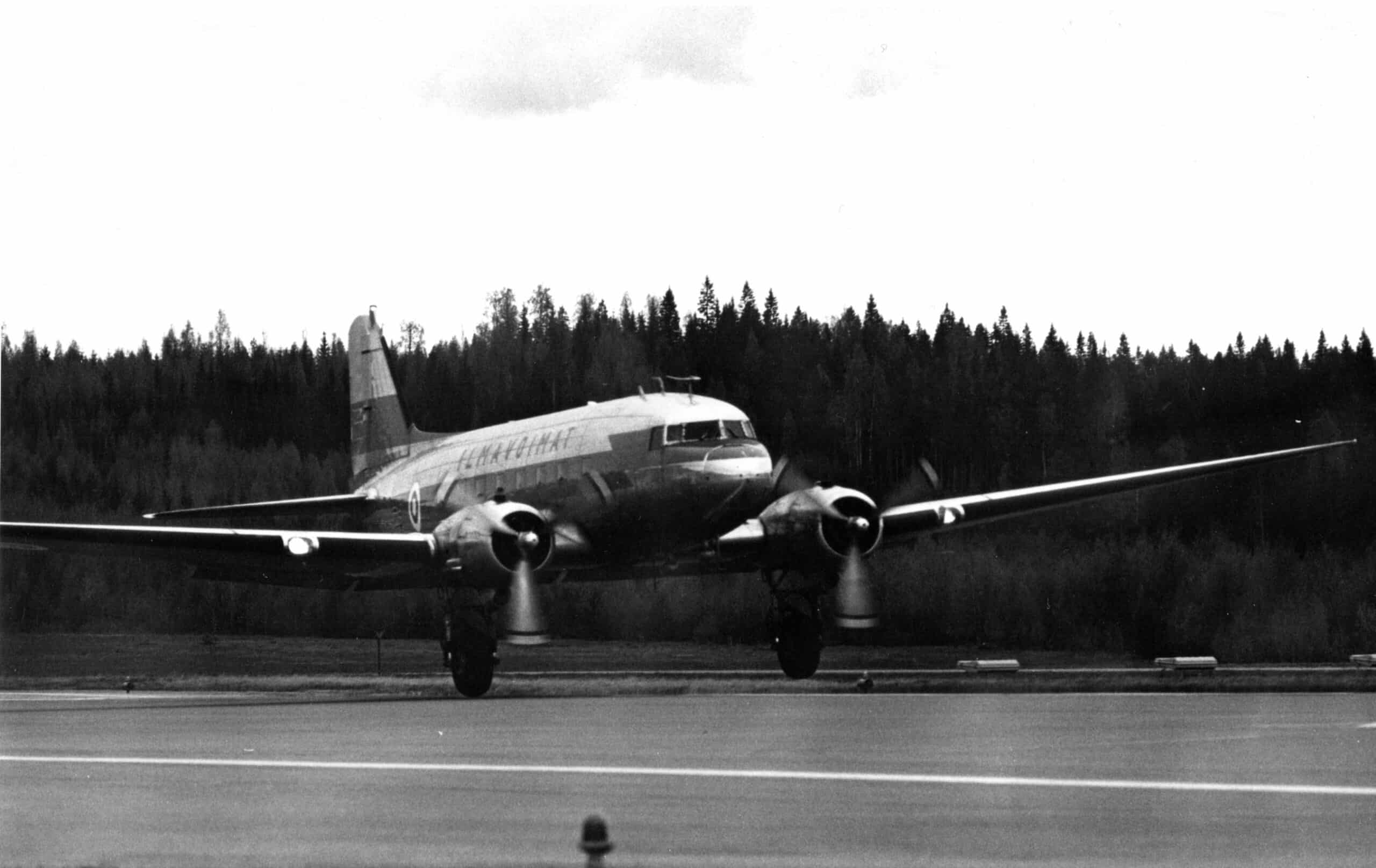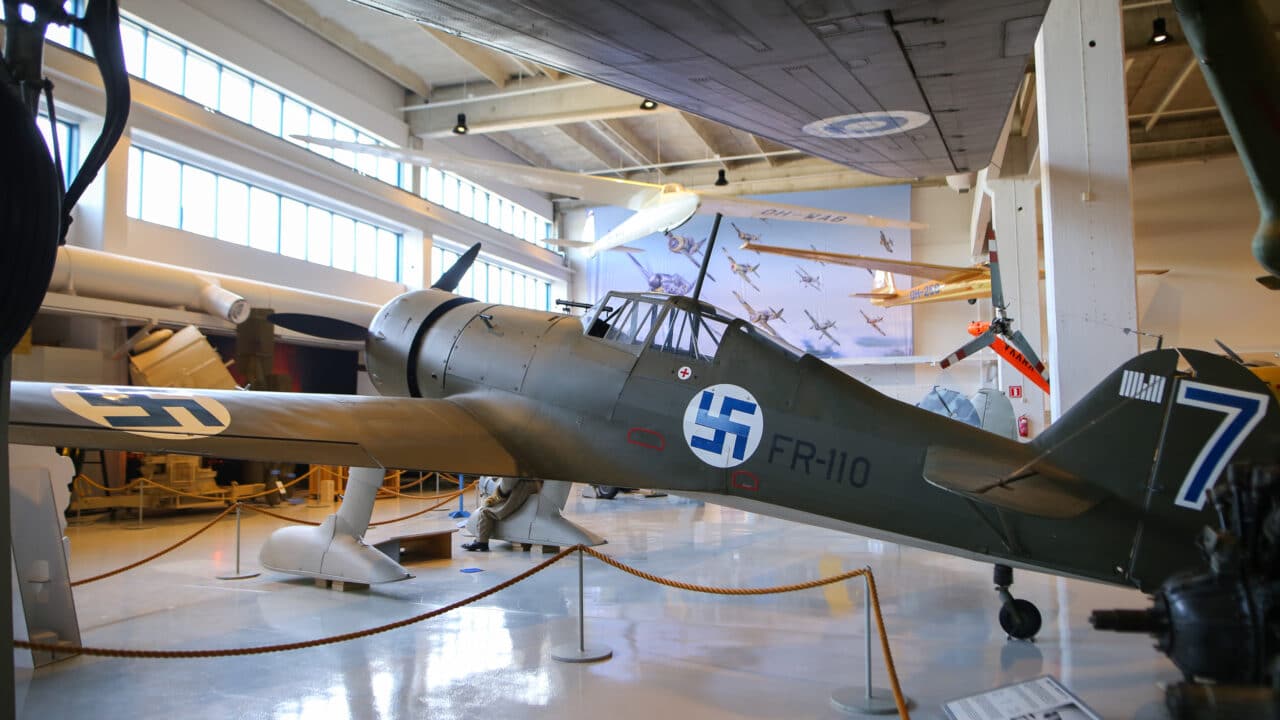The Douglas DC-3 (DC for Douglas Commercial) is an American all-metal twin-engine passenger and troop transport capable of carrying 28 to 33 passengers and three flight crew. Douglas designed the type on the basis of the DC-2 at the request of American Airlines. Thanks to the aluminium structure, introduced by Douglas, the aircraft was light, durable and inexpensive to manufacture.
The prototype made its first flight in December 1935, and the DC-3 became an immediate success in commercial aviation. 430 aircraft had been built before the United States joined the Second World War, and manufacturing licenses had been sold to Japan and the Soviet Union, where almost 5,000 aircraft were eventually built under designations PS-84 and Lisunov Li-2 and even used as night bombers. The Royal Air Force called the aircraft Dakota.
By 1947, Douglas had built 10,654 DC-3s, most of which were military versions designated the C-47 and C-53. A large number of retired troop transports were sold to airlines after the war. Finland purchased eight DC-3s from the surplus stocks of the United States in May 1946. The aircraft were refurbished and reconfigured to carry passengers by Fokker in the Netherlands and the State Metal Factory (later Valmet) in Tampere. 15 DC-3s saw service in Finland, of which 10 with Aero (later Finnair) and 4 with Kar-Air.
Eight of the Finnair’s DC-3s were sold to the Air Force in 1960–1970, and a ninth aircraft was purchased from Lufthansa. In addition to general air transport, the aircraft were used for paratrooper training, target towing and aerial mapping. One aircraft was equipped for electronic surveillance. The last flight of the type in the Air Force was in December 1984. It is estimated that over 300 DC-3s are still in use all over the world, one of which, OH-LCH, with Airveteran in Finland.
The museum’s DO-4 arrived in Finland in February 1947 and was operated as an airliner under registration OH-LCF and bearing the name “Kyytipoika” (“buggy driver”). The aircraft carried Field Marshal Mannerheim’s coffin from Switzerland to Finland in 1951. It was sold to the Air Force in February 1960 and donated to the museum in May 1982.
Link copied!
Additional info
Operating time
1960–1984
Manufacturer
Douglas Aircraft Company, USA
Measurements
Wing span 28.96 m; Maximum speed 346 km/h; Length 19.65 m; Altitude 5.46 m.
Type
Passenger and troop transport
Object number
870
Location
Main exhibition




